Abstract
The sensitivity of several microporous virus-adsorbent media for reliably detecting low levels of poliovirus from 380 and 1,900 liters of drinking water by use of the tentative standard method was investigated. The virus-adsorbent media tested were (i) nitrocellulose membrane filters, (ii) epoxy-fiber glass-asbestos filters, (iii) yarn-wound fiber glass depth filters, and (iv) epoxy-fiber glass filter tubes. Virus was adsorbed to the filter media at pH 3.5 and eluted with glycine buffer, pH 11.5. The results from 44 samples demonstrated that poliovirus was detected with a 95% reliability at mean virus input levels of 3 to 7 plaque-forming units/380 liters when 1,900 liters of water was sampled. At mean virus input levels of less than 1 to 2 plaque-forming units/380 liters, the detection reliability was 66% in 76 samples when 1,900 liters of water was sampled. No significant difference in virus detection sensitivity was observed among the various virus adsorbent media tested. Overall virus recovery efficiency ranged from 28 to 42%, with a grand average of 35%. Members of the coxsackievirus groups A and B, echovirus, and adenovirus were also detected when 380 and 1,900 liters of water were sampled. These experimental observations attest to the sensitivity of the tentative standard method for detecting low levels of virus in large volumes of drinking water.
Full text
PDF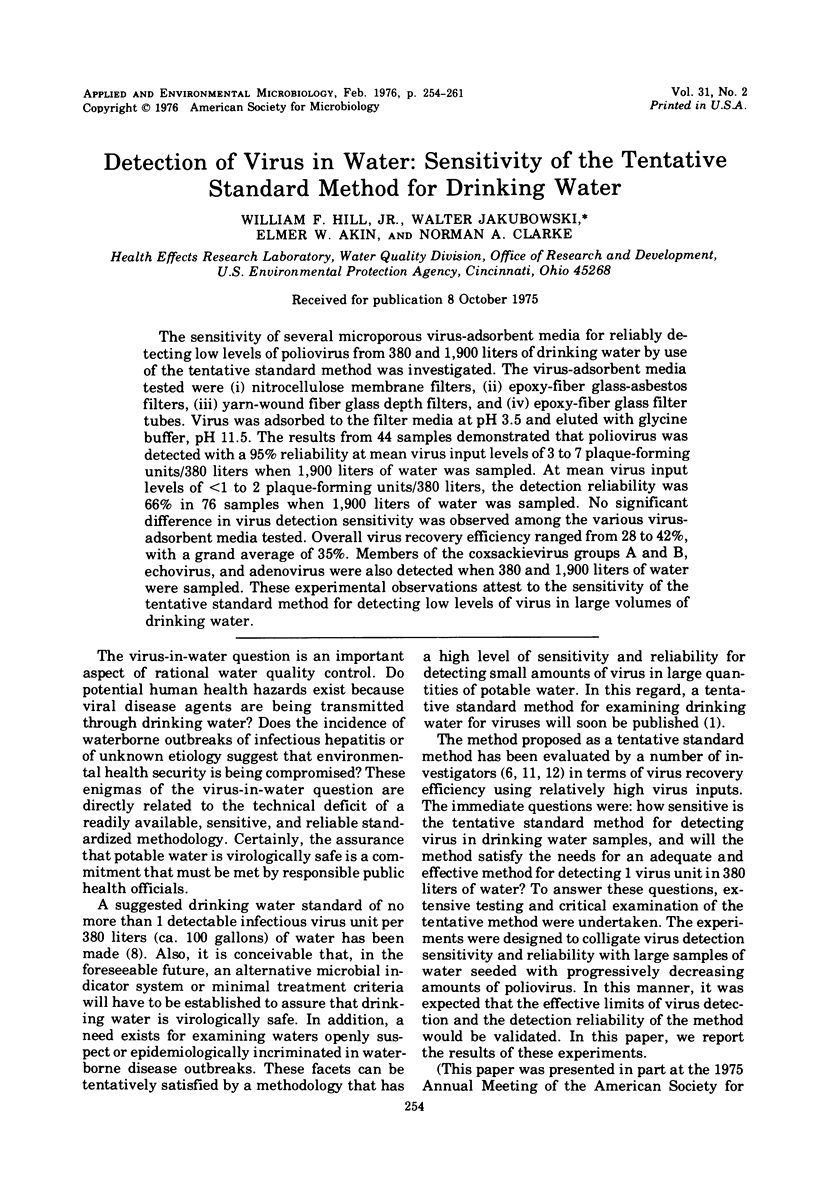
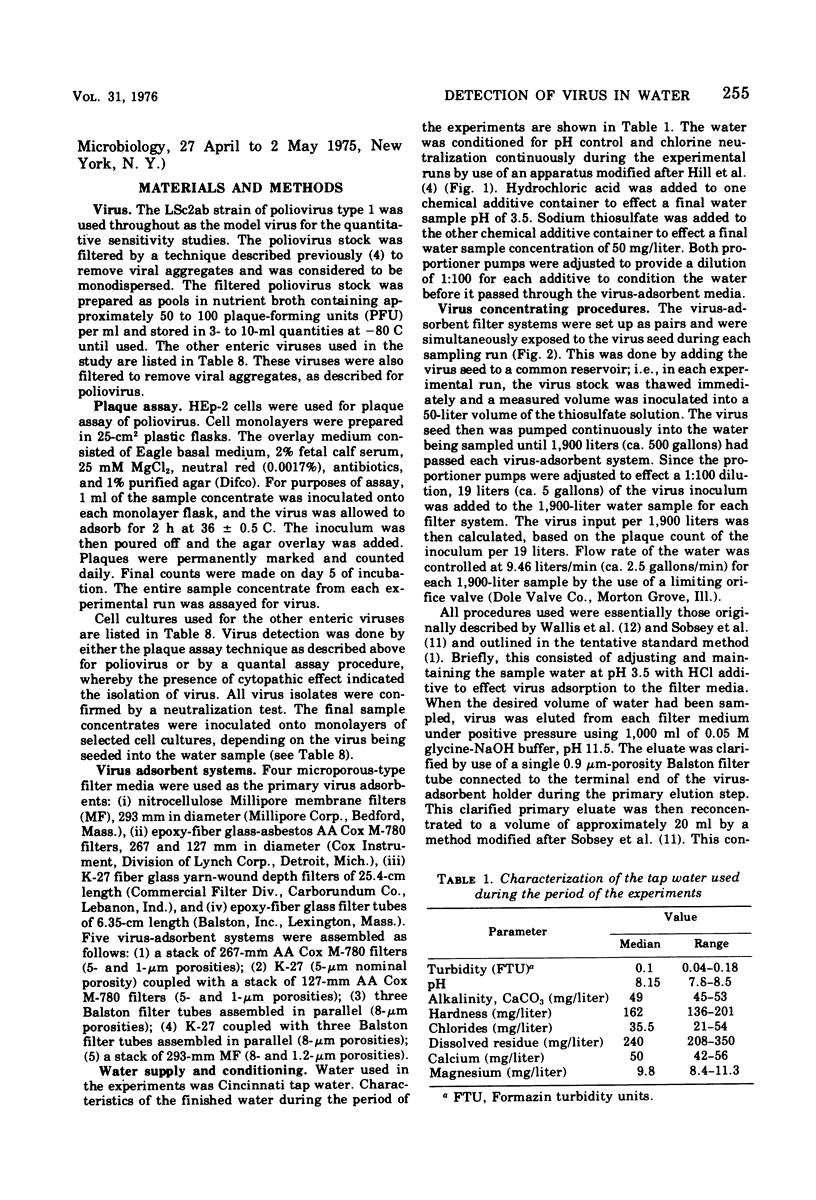
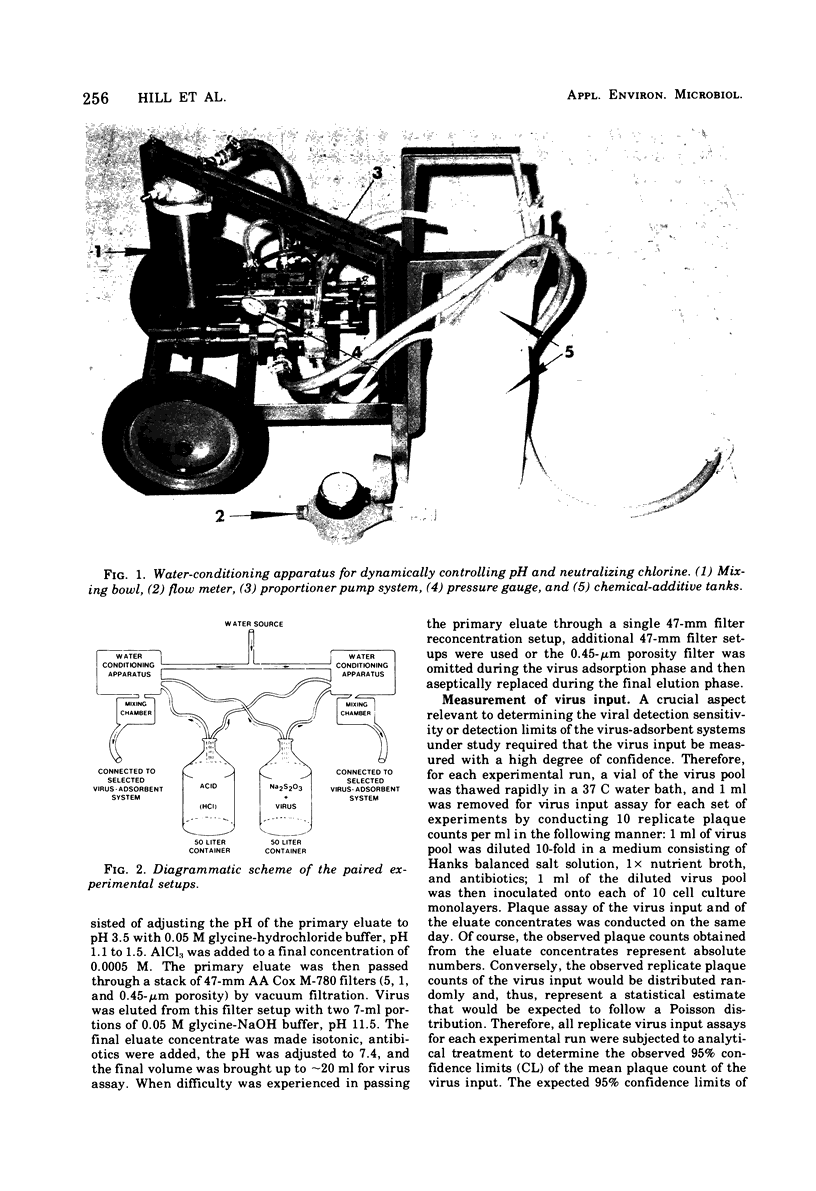
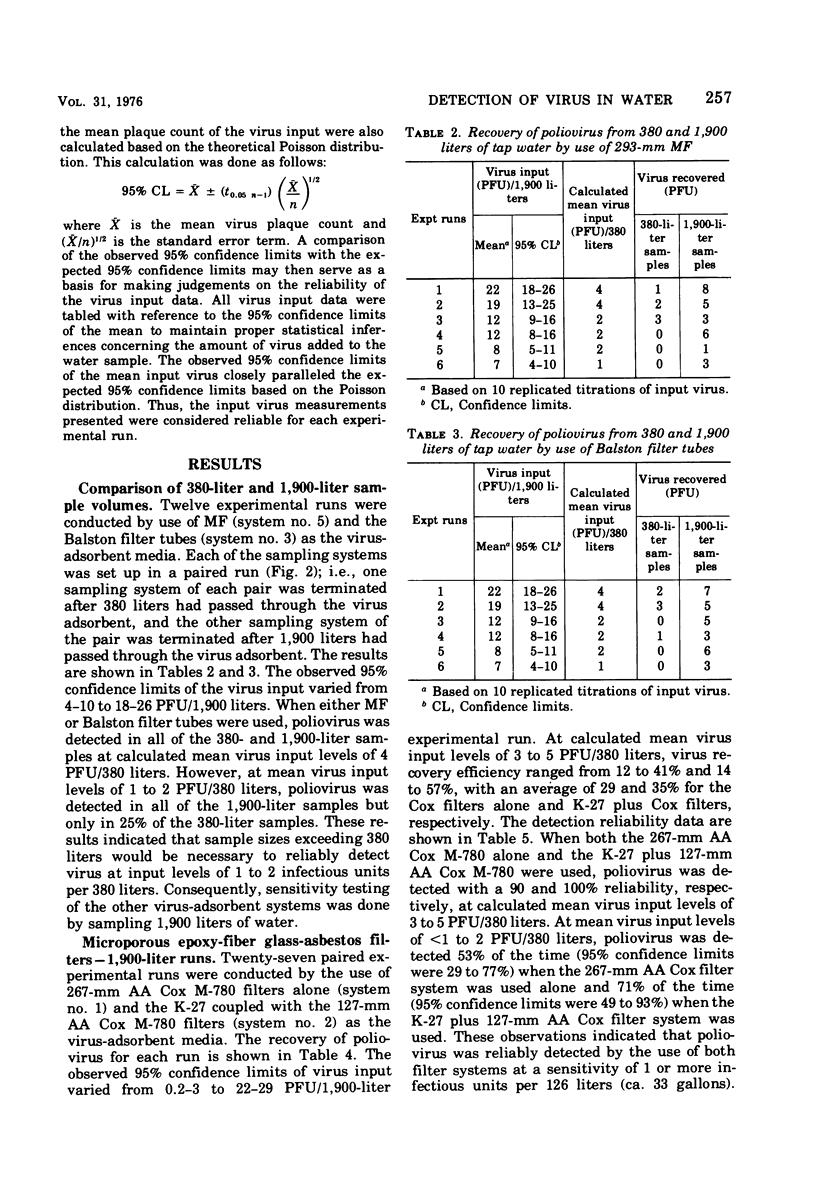
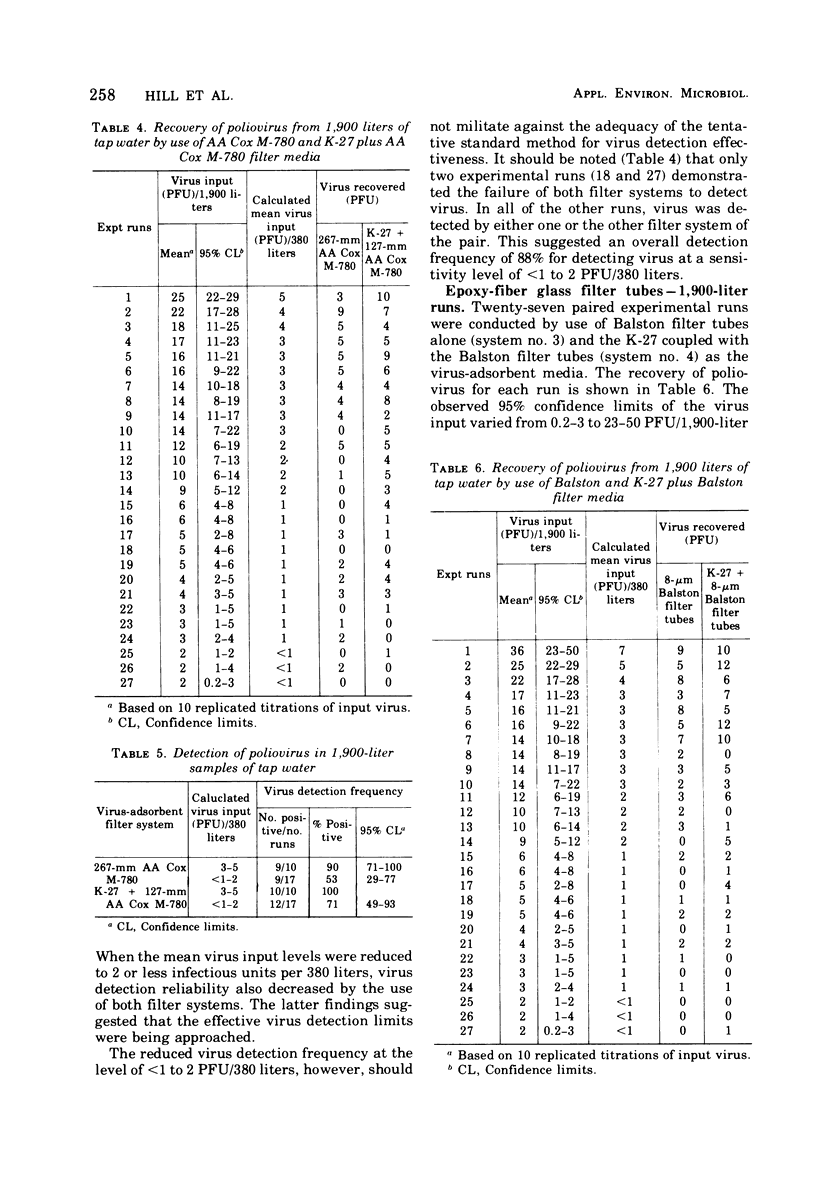
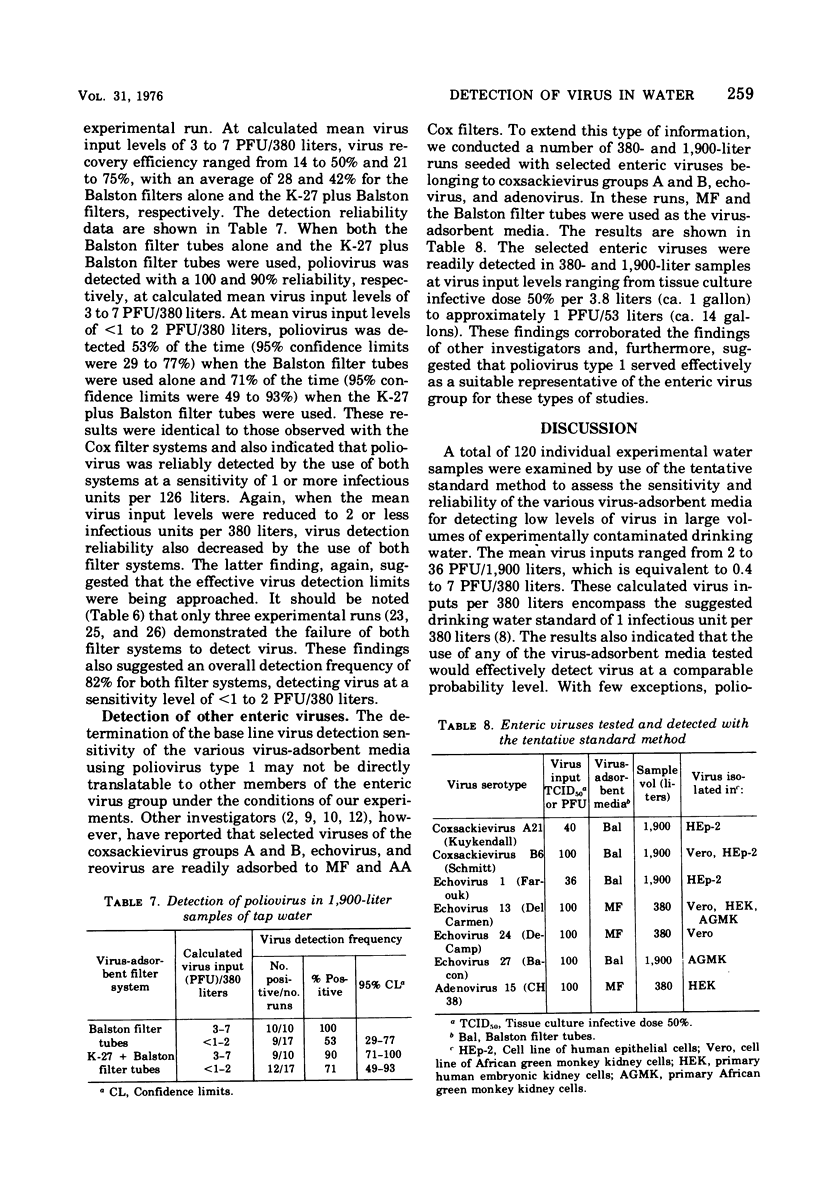
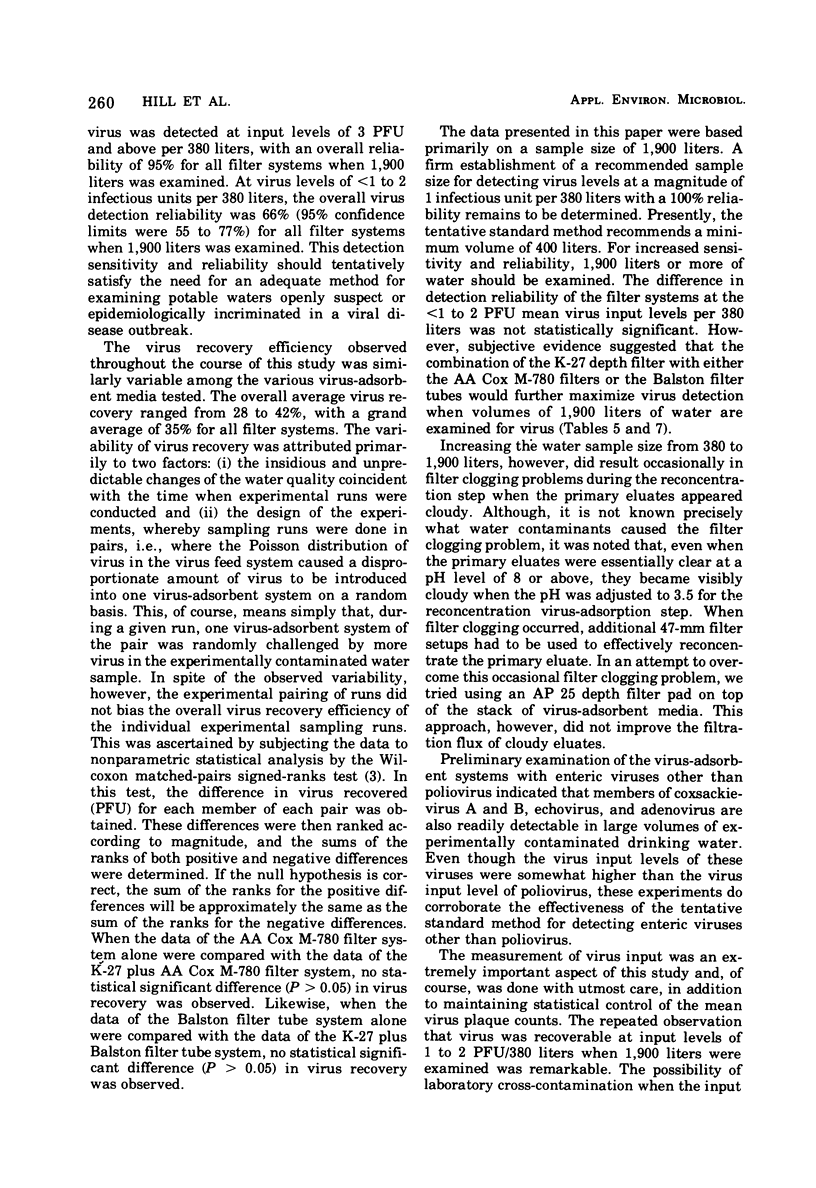
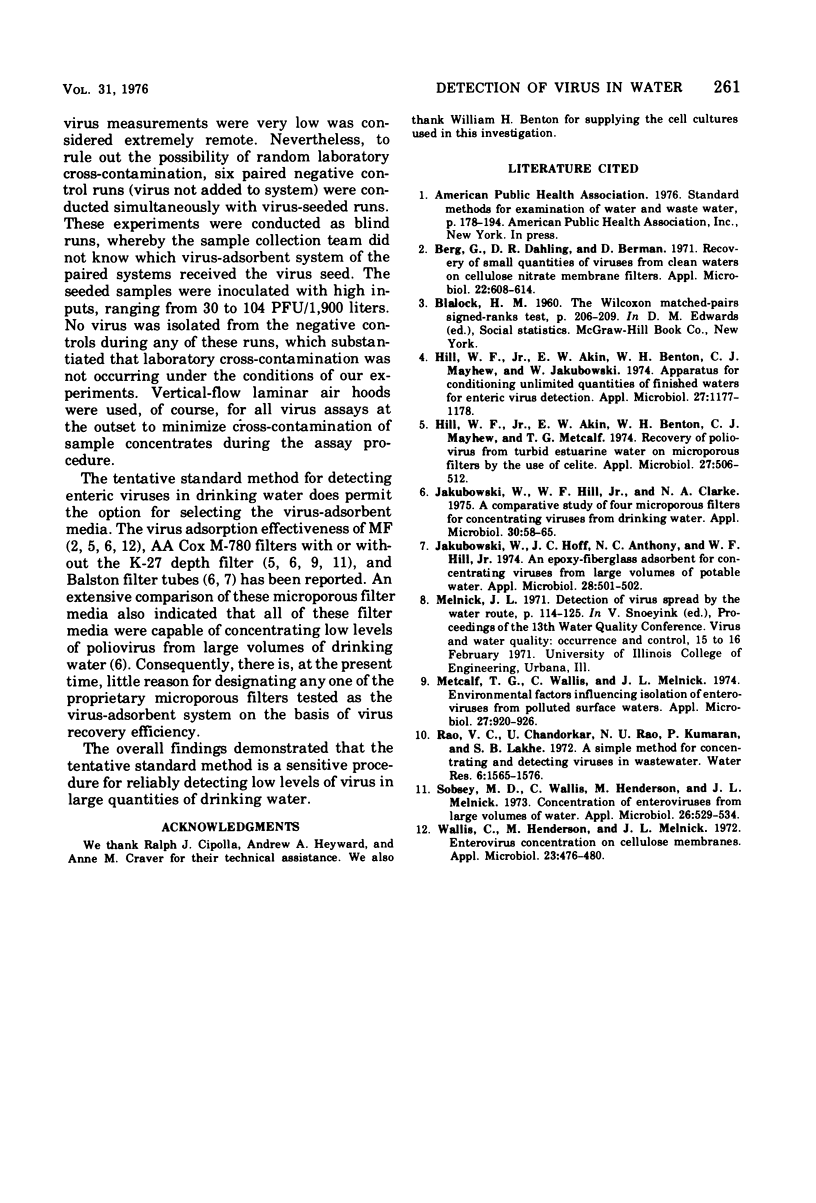
Images in this article
Selected References
These references are in PubMed. This may not be the complete list of references from this article.
- Berg G., Dahling D. R., Berman D. Recovery of small quantities of viruses from clean waters on cellulose nitrate membrane filters. Appl Microbiol. 1971 Oct;22(4):608–614. doi: 10.1128/am.22.4.608-614.1971. [DOI] [PMC free article] [PubMed] [Google Scholar]
- Hill W. F., Jr, Akin E. W., Benton W. H., Mayhew C. J., Jakubowski W. Apparatus for conditioning unlimited quantities of finished waters for enteric virus detection. Appl Microbiol. 1974 Jun;27(6):1177–1178. doi: 10.1128/am.27.6.1177-1178.1974. [DOI] [PMC free article] [PubMed] [Google Scholar]
- Hill W. F., Jr, Akin E. W., Benton W. H., Mayhew C. J., Metcalf T. G. Recovery of poliovirus from turbid estuarine water on microporous filters by the use of celite. Appl Microbiol. 1974 Mar;27(3):506–512. doi: 10.1128/am.27.3.506-512.1974. [DOI] [PMC free article] [PubMed] [Google Scholar]
- Jakubowski W., Hill W. F., Jr, Clarke N. A. Comparative study of four microporous filters for concentrating viruses from drinking water. Appl Microbiol. 1975 Jul;30(1):58–65. doi: 10.1128/am.30.1.58-65.1975. [DOI] [PMC free article] [PubMed] [Google Scholar]
- Jakubowski W., Hoff J. C., Anthony N. C., Hill W. F., Jr Epoxy-fiberglass adsorbent for concentrating viruses from large volumes of potable water. Appl Microbiol. 1974 Sep;28(3):501–502. doi: 10.1128/am.28.3.501-502.1974. [DOI] [PMC free article] [PubMed] [Google Scholar]
- Metcalf T. G., Wallis C., Melnick J. L. Environmental factors influencing isolation of enteroviruses from polluted surface waters. Appl Microbiol. 1974 May;27(5):920–926. doi: 10.1128/am.27.5.920-926.1974. [DOI] [PMC free article] [PubMed] [Google Scholar]
- Sobsey M. D., Wallis C., Henderson M., Melnick J. L. Concentration of enteroviruses from large volumes of water. Appl Microbiol. 1973 Oct;26(4):529–534. doi: 10.1128/am.26.4.529-534.1973. [DOI] [PMC free article] [PubMed] [Google Scholar]
- Wallis C., Henderson M., Melnick J. L. Enterovirus concentration on cellulose membranes. Appl Microbiol. 1972 Mar;23(3):476–480. doi: 10.1128/am.23.3.476-480.1972. [DOI] [PMC free article] [PubMed] [Google Scholar]



